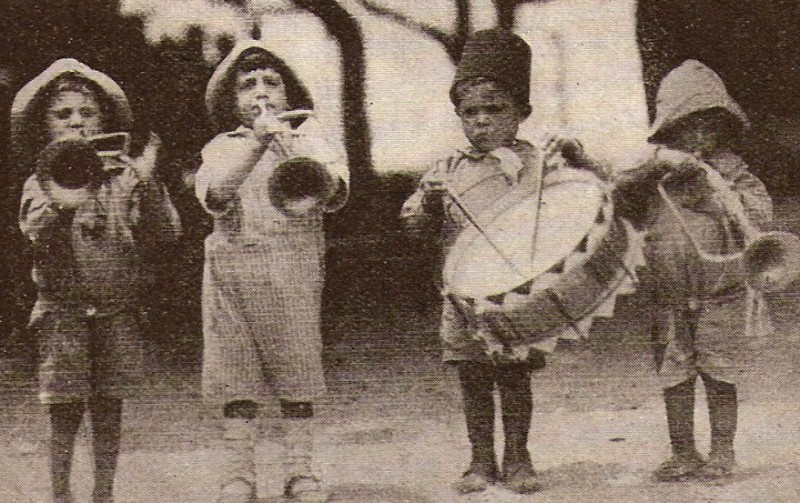IN AZAD’S OWN WORDS: “Toward Jubeil”
This emotional essay by Azad Kechian, age 12, was published in the New Near East magazine in April 1924.
In addition to being a Genocide survivor, Azad Kechian survived the devastating 1923 malaria epidemic that struck Nahr Ibrahim Orphanage and the surrounding community. He wrote about the experience of leaving his orphanage home for Jubail with a clarity and sensitivity far beyond his 12 years. An original editor’s note in the New Near East states that Azad spoke Armenian, English, Arabic, and Turkish. Sadly, we have no information on Azad Kechian apart from this essay.

Boys leaving Nahr Ibrahim Orphanage for Jubeil, 1923.
TOWARD JUBEIL, by Azad Kechian, age 12
We are yet at Nahr Ibrahim. After the examinations at the end of the school year the merry days of summer vacation are following.
All of us, having almost forgotten the bitterness of our fortune and the fear of national extermination, often played and amused ourselves in the extensive yard. Sometimes we had victorious races in the waves of the Mediterranean, and occasionally took walks among the neighboring gardens. All, being imbibed with high ideas and with the desire of becoming worthy children of our nation, were occupied with their school work.
But, alas, all of these were transient! The envy of nature was rushing like a black cloud, and instead of rain it dropped mortal and pestiferous drops of malaria. All the orphanage, conquered in a short time, were obliged to become slaves to the destroying sickness.
The only way of being free from this cursed sickness was the dissolution and demolition of our nest. And it was done!

It was the morning of the fourteenth of November when the autos were ready to separate us from the sanctified places where we had spent so many happy days and where you may imagine we felt ourselves bound with great chains. Oh, how difficult was that separation! We were departing with the first group. Hats were waving in the air. The last sorrowful words of farewell were being pronounced. Eyes were tearful. After some minutes the orphanage was already out of sight. And, behold, we reached Jubeil . . .
A clean hall was already prepared for us, and we were followed there by our new and self-devoted Armenian teachers and others. The two teachers of our class were with us, too, so that the sky was not so very strange — their fraternal arms were opened about us.
We found about 350 of our brethren here also. They came near to us immediately and divided our pains in half. They were our companions of fortune; they were comforting us. I felt myself more relieved also when, after a few more days passed, here began the altar of our study where I could scarcely give satisfaction to my excessive thirst.
Left: A kindergarten band at Nahr Ibrahim, 1923.
Track and field day at Jubeil Orphanage, 1924.
After the passing of still more time I had the chance to go again to Nahr Ibrahim. All the orphanage was quiet and solitary. Only the ancient river without pain and sadness was continuing its uniform course. Nobody remained there except the ten breathless and lifeless bodies who were in our laps some weeks ago when the orphanage was still living . . . but now they sleep in their cool and eternal beds, in memory of that prematurely dead orphanage . . . Respect to their bones!
HONORING THE BOYS OF NAHR IBRAHIM
Nahr Ibrahim Orphanage opened in January 1923 with 600 boys, most of whom had been evacuated from the Near East Relief orphanage in Marash. Stanley Kerr directed the orphanage, ably assisted by his wife Elsa. Within a few months Nahr Ibrahim housed 1000 boys. Tragically, a malaria epidemic struck the area in 1923. More than half of the orphans succumbed to the disease. The Kerrs refused to leave their young charges, even when Near East Relief officials encouraged them to leave the region for their own safety. The surviving children, including Azad Kechian, were moved to Jubeil.
